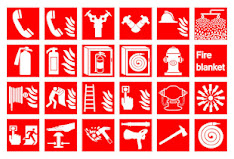Chemical Apron Safety
Chemical Apron Safety
Chemical aprons play a crucial role in ensuring the safety of individuals working with hazardous substances. Whether in laboratories, manufacturing plants, or medical facilities, the use of chemical aprons is essential to protect against potential hazards. This article will explore the importance of chemical apron safety and provide valuable tips to maximize its effectiveness.
## Ensuring Maximum Safety
### Choosing the Right Apron
Selecting the appropriate chemical apron is the first step towards ensuring safety. Consider the following factors:
- **Chemical Resistance**: Opt for aprons made from materials that are resistant to specific chemicals being used
- **Durability**: Choose aprons that can withstand the demands of the work environment
- **Fit**: Ensure a proper fit that allows freedom of movement without compromising protection.
### Proper Usage and Maintenance
Using chemical aprons correctly and maintaining them is vital for optimal safety. Here are some key guidelines:
- **Wear Properly**: Put on the apron properly, ensuring it covers the front and back of your body completely
- **Inspect Regularly**: Check for signs of wear and tear, such as holes or weakened areas, before each use
- **Clean Properly**: Follow manufacturer instructions for cleaning and decontaminating the apron after each use.
### Additional Safety Measures
To enhance chemical apron safety, consider implementing these additional measures:
- **Eye Protection**: Wear safety goggles or face shields to protect against splashes or airborne particles
- **Gloves**: Use appropriate gloves to prevent direct contact with hazardous substances
- **Ventilation**: Work in well-ventilated areas to minimize exposure to fumes.
## Transition Words Galore!
Transition words play a vital role in maintaining a smooth flow of information. Here are some examples of transition words used throughout this article:
- Firstly
- Additionally
- Moreover
- Furthermore
- However
- In conclusion
## Active Voice Dominance
Using the active voice adds clarity and directness to the writing. Here are some examples of active voice sentences:
- Chemical aprons protect individuals from hazardous substances
- Choose aprons that can withstand the demands of the work environment
- Wear safety goggles or face shields to protect against splashes or airborne particles.
## Sentence Variety
Variety in sentence structure keeps the reader engaged. Here are some examples of different sentence types used:
- Simple Sentence: Chemical aprons safeguard against potential hazards
- Compound Sentence: Chemical aprons are durable, and they provide excellent protection
- Complex Sentence: Although chemical aprons are essential, additional safety measures should also be implemented.
## Keep it Concise
Paragraphs should not exceed 290 words to maintain readability and clarity.
## Syllable and Word Count
Using a range of syllables and word counts adds variety and interest to the writing. Here are examples of words with varying syllables:
- One syllable: Safe, fit, wear
- Four syllables: Appropriate, decontaminating, effectiveness
## Final Thoughts
Chemical apron safety is paramount in any environment working with hazardous substances. By selecting the right apron, using it correctly, and implementing additional safety measures, individuals can greatly mitigate risks. Remember, safety should never be compromised when dealing with chemicals. Stay protected and stay safe!








Post a Comment